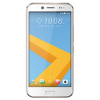HTC 10 Evo vs UleFone Armor 7
What is the difference between HTC 10 Evo and UleFone Armor 7. Find out which smartphone has better performance.
Performance (Benchmarks)
| 1565 | 3DMark for Android Sling Shot Extreme (OpenGL ES 3.1 / Metal) | 1186 |
| 1653 | 3DMark for Android Sling Shot | 2138 |
Specs
| HTC 10 Evo | Model name | UleFone Armor 7 |
| Android 7.0 | Operating system (OS) | Android 9.0 |
| Bluetooth WLAN | Network Connectivity | Bluetooth WLAN NFC |
| Yes, Type-C | Interfaces / connectors | Yes, Type-C |
Display
| 2560 × 1440 px | Resolution | 2340 × 1080 px |
| Super LCD 3 | Technology | IPS LCD |
| Yes | Multi‑Touch | Yes |
| 5.5" | Screen size | 6.3" |
Processor (CPU)
| Up to 2.0 GHz quad-core ARM Cortex-A57 and 1.5 GHz quad-core ARM Cortex-A53 | CPU Architecture | Up to 2.2 GHz dual-core ARM Cortex-A75 & 2.0 GHz hexa-core ARM Cortex-A55 |
| Snapdragon 810 (MSM8994 v2.1) | CPU | Helio P90 |
| Adreno 430 | GPU | PowerVR GM9446 |
Storage
| 3072 MB | RAM (Memory) | 8192 MB |
| 32 / 64 GB | Storage (ROM) | 128 GB |
| microSD / microSDHC / microSDXC | Card slot | microSD / microSDHC / microSDXC |
Camera
| Yes, 16 MP | Rear Camera(s) | Yes, 48 MP |
| Yes, 8 MP | Selfie Camera(s) | Yes, 16 MP |
Networks
| GSM 850 / 900 / 1800 / 1900 | 2G | varies by model |
| HSDPA 850 / 900 / 1900 / 2100 | 3G | varies by model |
| varies by model | 4G (LTE) | varies by model |
Location
| Yes | GPS | Yes |
| Yes | A-GPS | Yes |
Battery
| 3200 mAh | Battery capacity | 5500 mAh |
Sensors
| Yes | Compass | Yes |
Design
| 77.3 / 153.6 / 8.1 mm | Dimensions | 81 / 165.9 / 13.6 mm |
| 174 g | Weight | 290 g |

